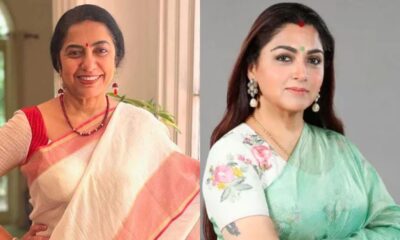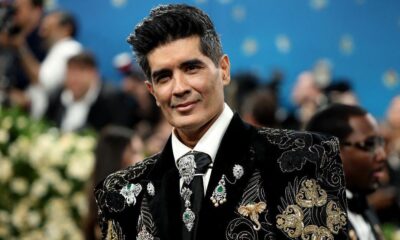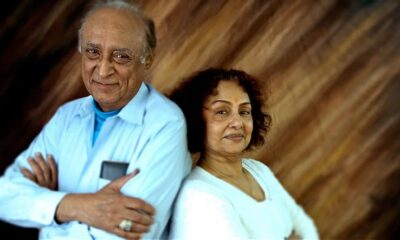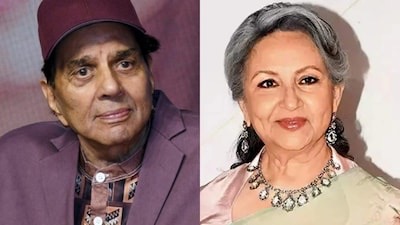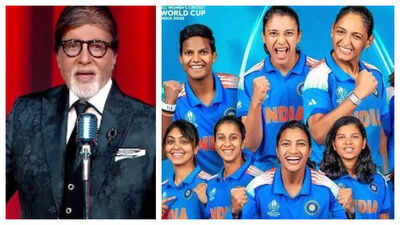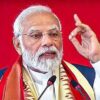Film Maine Pyaar Kiya saved Rajshri from closing down

Rajshri Productions was acknowledged for heartfelt, family-friendly cinema, delivering classics like Dosti, Uphaar, Geet Gata Chal, Chitchor, and Nadiya Ke Paar that audiences loved. Yet by the late 1980s, the studio was on shaky ground and faced financial hassles.
At 75, Rajshri patriarch Tarachand Barjatya wasn’t sure which way to steer the studio. His son, Rajkumar Barjatya, had tried producing films with outside directors, but nothing was clicking.
Meanwhile, Rajkumar’s son, the 19-year-old Sooraj Barjatya, had no interest in college. He wanted to direct films. He had even assisted Mahesh Bhatt on Rajshri’s Saaransh. Under-confident and quiet, Sooraj wasn’t his father’s obvious choice for a filmmaker.
At 20, Sooraj wrote a story his father didn’t approve of. Instead, his father suggested a Rajasthani folk tale: a father leaves his daughter with a friend and goes away to earn money; she falls in love with the friend’s son, and when the father returns and sees her insulted, he takes her away in anger.
Sooraj knew the film had to speak to young hearts. How would the boy and girl fall in love? How could it feel different? He realised they had to be friends first. That dosti was the spark that became Maine Pyar Kiya. He wanted a writer, but his father refused, warning that a professional might dilute his fresh vision. Sooraj wrote the screenplay himself, and when it came to dialogue, he admitted he didn’t know Hindi well. His father said, “Write it in English.” Sooraj did, and then translated it, trusting that real freshness could come only from his own vision.
It was now time for casting.
Many fresh faces were screen-tested for the lead pair, including Deepak Tijori, Piyush Mishra, even Vindoo Dara Singh. A model, Shabina Dutt, came to audition for the heroine, but her test didn’t fit the role. Before leaving, she mentioned a boy she’d worked with in an ad: Salman Khan, son of screenwriter Salim Khan.
Salim, once half of the legendary Salim-Javed duo, had faced a rough patch after the partnership ended. It had taken an emotional and financial toll on the family. His elder son, Salman, started as a model and struggled for his first acting break. He debuted a year earlier in Biwi Ho To Aisi released in 1988 featuring Rekha and Farooq Sheikh, playing Sheikh’s brother. It was a forgettable role where his voice was dubbed by someone else.
By now, both Sooraj Barjatya and Salman Khan were at a stage where the stakes couldn’t have been higher. Everything rested on Maine Pyaar Kiya. When Salman came for the screen test, Sooraj loved his photographs and later said, “He had a swag even then.”
But Salman wasn’t exactly a fresh face, having already debuted, so Sooraj kept testing other actors. What surprised him most was Salman’s innocence and generosity. He kept sending other boys, saying, “He’s better than me, take him.” Finally, after five months, Sooraj realised there was no one better for the role than Salman Khan.
Finding the heroine was even harder. Many parents insisted their daughters would only act if it meant working with big, established stars. The team planned to travel to Allahabad, searching for a fresh face with small-town innocence, when Sooraj’s father called. He had seen a photo of a girl, Bhagyashree Patwardhan, in Grihalakshmi magazine and was struck by her natural charm. The Barjatyas knew her family, and soon the screen test was done. But Bhagyashree said no. She wanted to pursue higher studies. Sooraj persisted and even reshaped her character according to her wishes. In the end, she signed the film for one lakh rupees, more than three times what Salman received – just 30,000.
Salman recommended his friend Mohnish Bahl, veteran actress Nutan’s son, who had earlier tried his luck as a leading man without success. Completing the world of Maine Pyaar Kiya was a strong supporting lineup: Reema Lagoo, Alok Nath, Rajeev Verma, and Laxmikant Berde.
Though the story followed a traditional Bollywood formula, the styling of the leads turned out to be a defining feature. Sooraj Barjatya, inspired by Tom Cruise’s “Top Gun jacket’ designed a similar one for Salman, adorned with patches and insignias reminiscent of the American armed forces. He paired it with the iconic FRIEND cap. Bhagyashree’s wardrobe consisted of traditional Indian clothing that emphasised her graceful and understated character.
Filming took place over five to six months on massive sets in Film City, Mumbai, with outdoor scenes shot in Ooty. True to Rajshri’s legacy of heartfelt musicals, immense care went into crafting the sound of Maine Pyar Kiya. Sooraj wanted seasoned voices that could give a distinct identity to his new stars. S. P. Balasubrahmanyam emerged as voice of Salman, while the legendary Lata Mangeshkar’s ageless notes carried Bhagyashree’s innocence into the songs the nation would never forget.
For the music, Sooraj turned to Raamlaxman.
Interestingly, Raamlaxman was the pen name of the composer duo Surendra and Vijay Patil. Surendra passed away in 1976, and Vijay Patil, who performed as Laxman, carried on the name as a tribute. He had worked hard for two decades but had never tasted big success.
Maine Pyar Kiya released on 29 December 1989 with just 29 prints. It was a calculated Rajshri strategy, as they were the distributors too. A huge chunk of the publicity budget (Rs 10 lakh) went into pushing the soundtrack on the radio. The songs had already caught fire even before the film arrived.
In the very first week, the country lost its heart. This was a love story that felt modern yet deeply Indian. A vulnerable lover boy, the US-educated Prem, with enviable muscles, denim and vest, and a heart wide open. But it was Bhagyashree’s innocence that swept audiences off their feet. The major credit for the success was initially attributed to her. Audiences didn’t just accept the newcomers; they embraced them like their own. Half the battle was won right there.
In Bollywood, the films that last are the ones whose dialogues and songs become part of your own life. Lines you quote without thinking. Songs that turn into your feelings. With Maine Pyaar Kiya, both hit home spectacularly.
Sooraj Barjatya’s instinct was right: this love story would work because it began with friendship. The FRIEND cap became a craze, and the lines about dosti became Bollywood folklore: “Dosti ka ek usool hai, madam… no sorry, no thank you” and “Dosti ki hai, nibhaani toh padegi.”
And when that friendship bloomed into love: “Dost woh hota hai jisse milne ko jee chahe… baat karne ko jee chahe, dekhte hi lage, that’s my friend,” leading to Suman’s confession: “Prem, maine pyaar kiya hai… tumse.”
But the true sign of an iconic film is when even the villain’s dialogue becomes unforgettable. Jeevan’s (Mohnish Bahl’s) line still echoes: “Ek ladka-ladki kabhi dost nahi hote… yeh toh ek parda hai, kapkapaati raaton mein dhadakte dilon ki aag ko chhupaane ka.”
It also gave Bollywood a “cool” mom in Reema Lagoo, so refreshingly different from the weeping, long-suffering mothers audiences had grown used to. She understood her son, embraced his choices, and brought a warmth that felt both modern and deeply Indian.
And then came the music. Eleven songs, eleven chartbusters. Right from the title song Aate Jaate Hanste Gaate (a direct lift from a Stevie Wonder song) to Kabootar Ja Ja (the white pigeon’s name was Handsome) and Aaja Shaam Hone Aayi, the nation was humming the film long before it left theatres.
The album turned out to be HMV’s biggest seller, crossing five million cassettes, the highest-selling Bollywood soundtrack of the decade. Raamlaxman had eventually transformed his destiny. Maine Pyar Kiya even ushered in a first for Hindi cinema: official movie merchandise – props, jackets, and caps.
The film not only became the biggest hit of 1989, it saved Rajshri from shutting its doors and ended up as one of the highest-grossing Indian films of the entire decade. It travelled too. It was released in English as When Love Calls and in Spanish as Te Amo. All this in a year that also gave Chandni, ChaalBaaz, Parinda, Ram Lakhan, and Tridev.
Maine Pyar Kiya flipped the script overnight. Salman and Bhagyashree became the nation’s darlings, and just like that, the era of blood-soaked revenge sagas felt tired. The country wanted melody again, and romance ruled the moment. It brought families back to theatres, revived a gentler idea of love, and marked the true arrival of the man who would go on to redefine stardom in Bollywood – Salman Khan.
Bhagyashree stepped away from films after her phenomenal debut to marry Himalaya Dasani. She returned three years later, but only on one condition: that her husband would play the hero. They made three films together but could never recreate the magic of Maine Pyar Kiya.
Watching it today, Maine Pyar Kiya may feel a little old-fashioned, but its songs are still hummable and its lines still bring a smile. It was a film born of an innocent India, standing on the brink of change – in love, in relationships, in stories, in the way cinema celebrated life itself.
News Edit KV Raman



